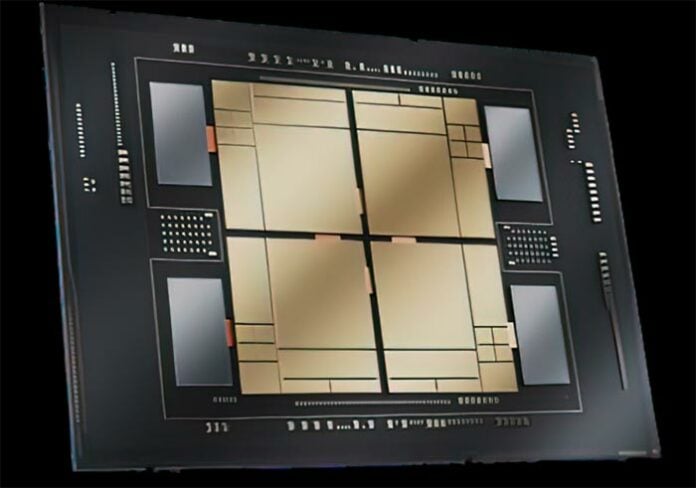During a virtual chalk talk presentation yesterday, Intel provided an update to 4th Gen Xeon processors commonly known as Sapphire Rapids. The much-delayed datacentre processor series, originally planned for a 2021 launch, beset by numerous delays, is now sampling to large-scale customers under a preview remit, while general release, rumoured to be early next year, still has not yet been confirmed.
Hosted by Lisa Spelman, Corporate Vice President and General Manager, Xeon and Memory Group, and Ronak Singhal, Senior Fellow, the chalk talk laid our near-term plans for Sapphire Rapids whilst also providing a general state of play.
Club386 was the first to quiz the pair on Sapphire Rapids. Currently only available using the Dev Cloud and not to end customers, with datacentre shipments likely at some point in 2023, we wondered whether Intel has a large-enough window between Sapphire Rapids and Emerald Rapids – Sapphire Rapids’ successor, also due in 2023 – for the former to be a worthwhile hard launch for on-prem use.
There’s Enough Time For Sapphire Rapids
Striking a bullish tone, Spelman commented “We are shipping to our customers now. They’re building out systems. We’ve mentioned they have private previews going, and again that Dev Cloud opportunity. We have had a lot of time to work with our customers and get them ready for Sapphire, so we really are driving the transition for customers that really value that performance uplift that comes from not just Xeon Scalable but from some of the platform technologies.
We’ll have Ice Lake customers that are moving to Emerald Rapids and then we have those performance-push customers that are going to move every single generation. So we really do think that there’s enough ramp window, but that in about a year from now, we’ll still actually see both the ramp of Sapphire and Emerald continue on. So it’ll be multipronged, for sure.”

We further wondered about Intel’s ongoing strategy to upsell products based on paid-for upgrades, particularly as it pertains to Sapphire Rapids. Known as Software-Defined Silicon (SDSi), Intel plans to unlock processor features at additional cost, with the thinking that users can avail more powerful features at a time that suits them, rather than be hamstrung by a larger upfront cost for fully-enabled silicon.
SDSi – An Exciting Opportunity
“That’s an exciting one. Working with the ecosystem, when we look at that on-demand capability, we are using Sapphire as an opportunity to work with some of our key customers to further advance their offerings and allows them to start testing it out in their environment. It’s not just that Intel puts a feature in, but it changes the way in which they run their factory flows, the way they put systems out in the market. 4th Gen will be a great test ground for that (referring to SDSi), and we’ll see more and more use-cases start to get deployed. We’ll look to ramp SDSi heavier in our next generation,” continued Spelman.
“The thing that’s exciting about SDSi is we have these new capabilities [in Sapphire Rapids] and some of them do take work to take advantage of – accelerators and the like. Essentially, you now have a try-before-you-buy program with us. Am I going to get value from that [feature], let me see, and if I get value, hey, then I can take advantage of SDSi as a way to get those features,” added Singhal.
“The next-gen use-cases are pretty exciting when it really starts to open up. What’s been cool is to see the ecosystem look at it from a ‘what are you doing’ to ‘wow, I think I’ve got some ideas on how I can win using it,” said Spelman.
Sapphire Rapids Is A Balanced CPU
Switching gears, Singhal took the opportunity of framing what Intel believes to be the performance debate, obliquely referring to limitations present in more-core Epyc offerings from rival AMD. “How do our customers measure performance, how do they say this is the product I want, this is the product I need? Is performance total throughput, is it run an application across all the cores and see what your performance is?
That’s an interesting metric, but what we see from many of our cloud customers is the most important performance metric is not total socket throughput, but in many cases, it’s performance per core. That’s what they’re offering to their end customers. We spent a lot of time on Sapphire Rapids balancing total socket throughput against highest per-core performance.”
Neither Spelman nor Singhal would be drawn on the exact launch date of Sapphire Rapids, though. Our best guess is the end of Q1 2023.

